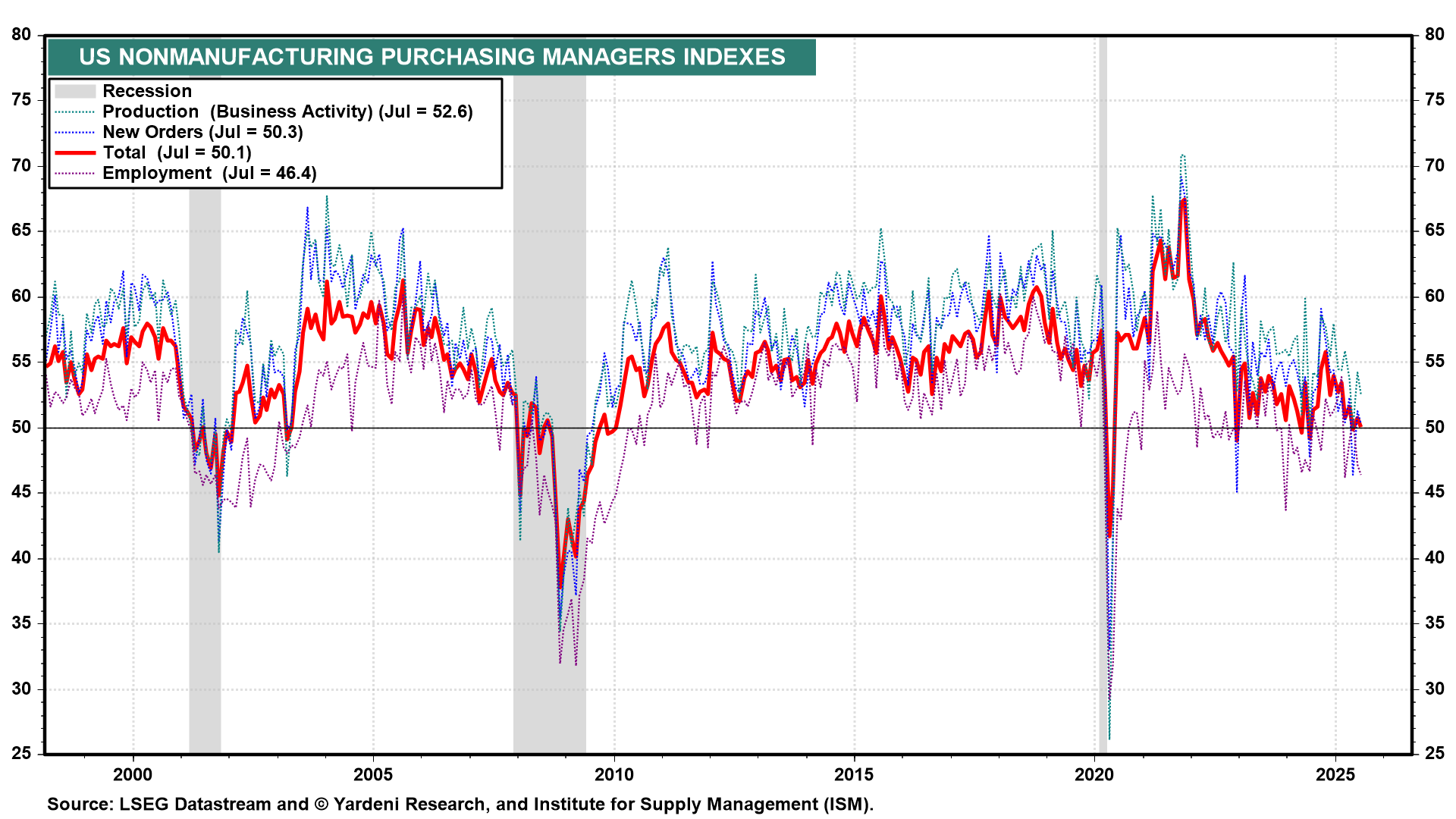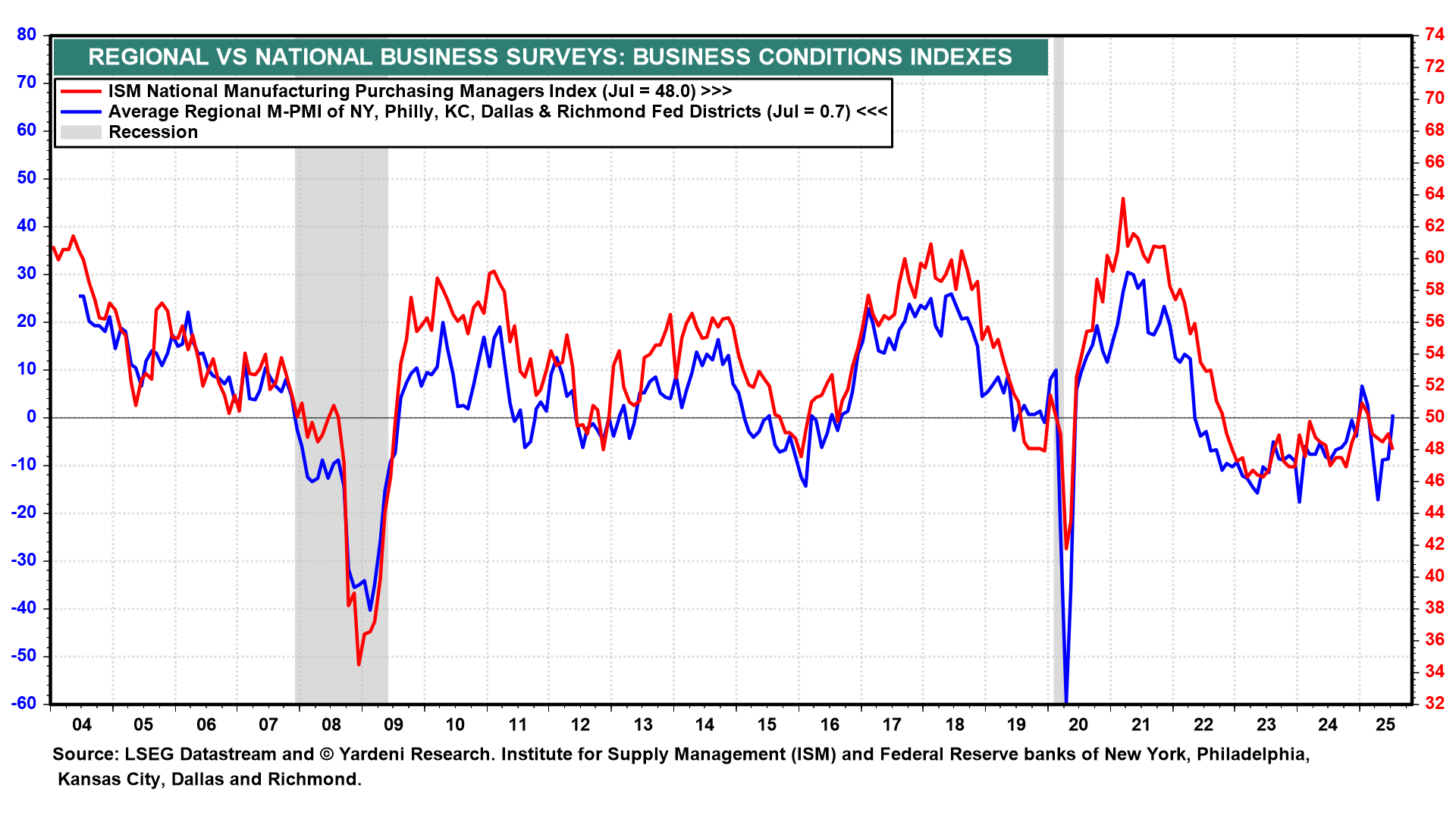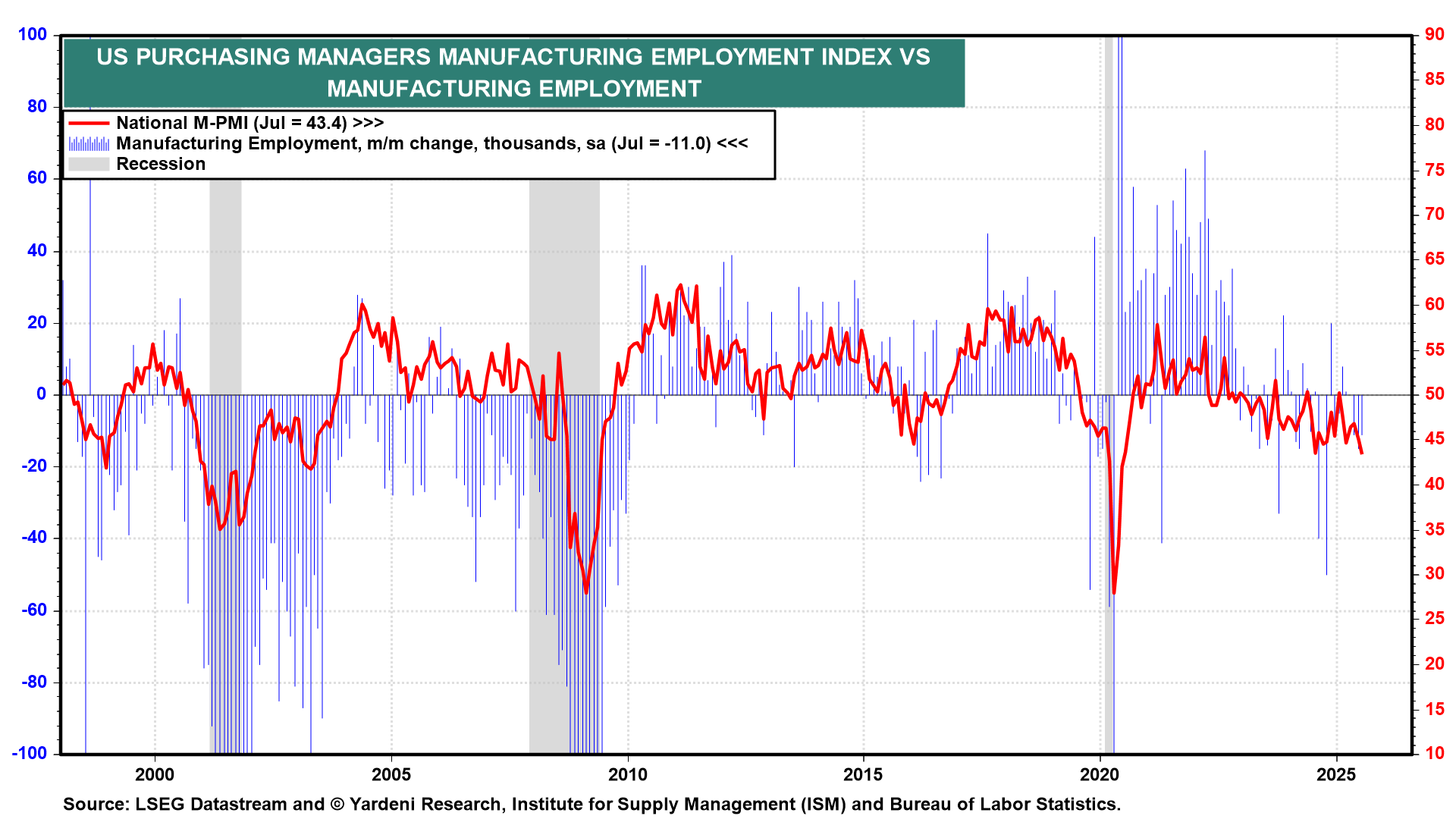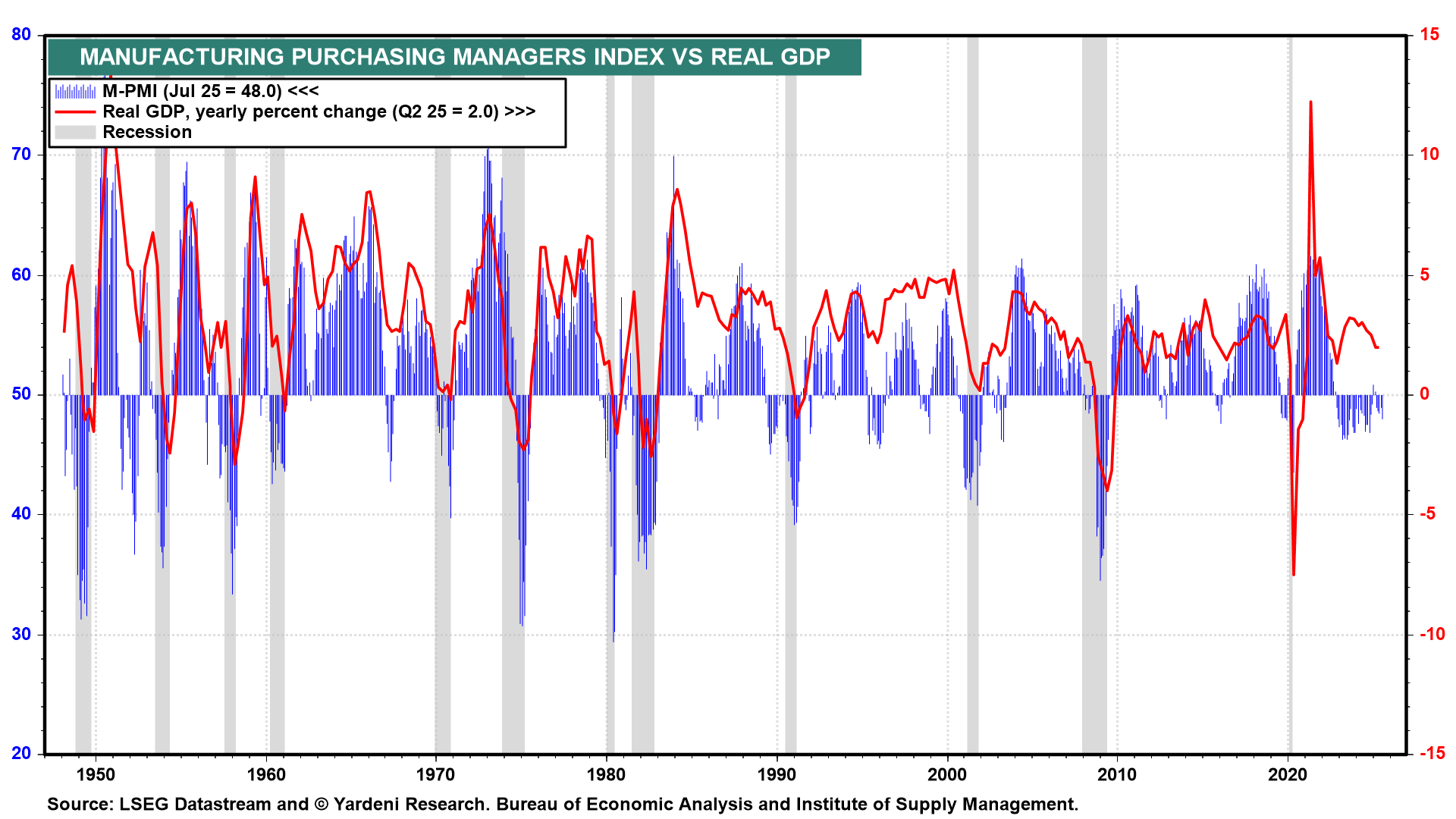Tyson Foods to close major Nebraska beef plant amid cattle shortage - WSJ
The stock and bond markets didn’t respond much to the national survey of non-manufacturing purchasing managers this morning, even though it was on the weak side (chart). The overall NM-PMI, which the Institute for Supply Management (ISM) compiles, edged down to 50.1, just above the expansion/contraction line at 50.0. The production component was solid at 52.6. But the employment component fell to 46.4. On the other hand, the S&P Global flash US Services PMI Business Activity Index jumped from 52.9 in June to 55.2 in July.
During July, the ISM and S&P Global surveys of manufacturing were both weak, with readings of 48.0 and 49.5, respectively (chart). On the other hand, the average of the general business indexes of the regional business surveys conducted by five of the 12 Fed district banks improved last month.

The weakness in manufacturing’s payroll employment has been reflected in the employment component of the M-PMI (chart).

The same cannot be said for NM-PMI’s employment index, which has been weak, while payroll employment in services industries has continued to grow (chart)

In any event, the correlation between the M-PMI and the growth rate of real GDP goods has not been as high recently as it was in the past (chart).

On the other hand, the recent slowing in the growth rate of real GDP services has been reflected in the NM-PMI (chart).

Finally, the prices-paid indexes in both the M-PMI and NM-PMI have increased significantly over the past few months as a result of rising tariffs.

